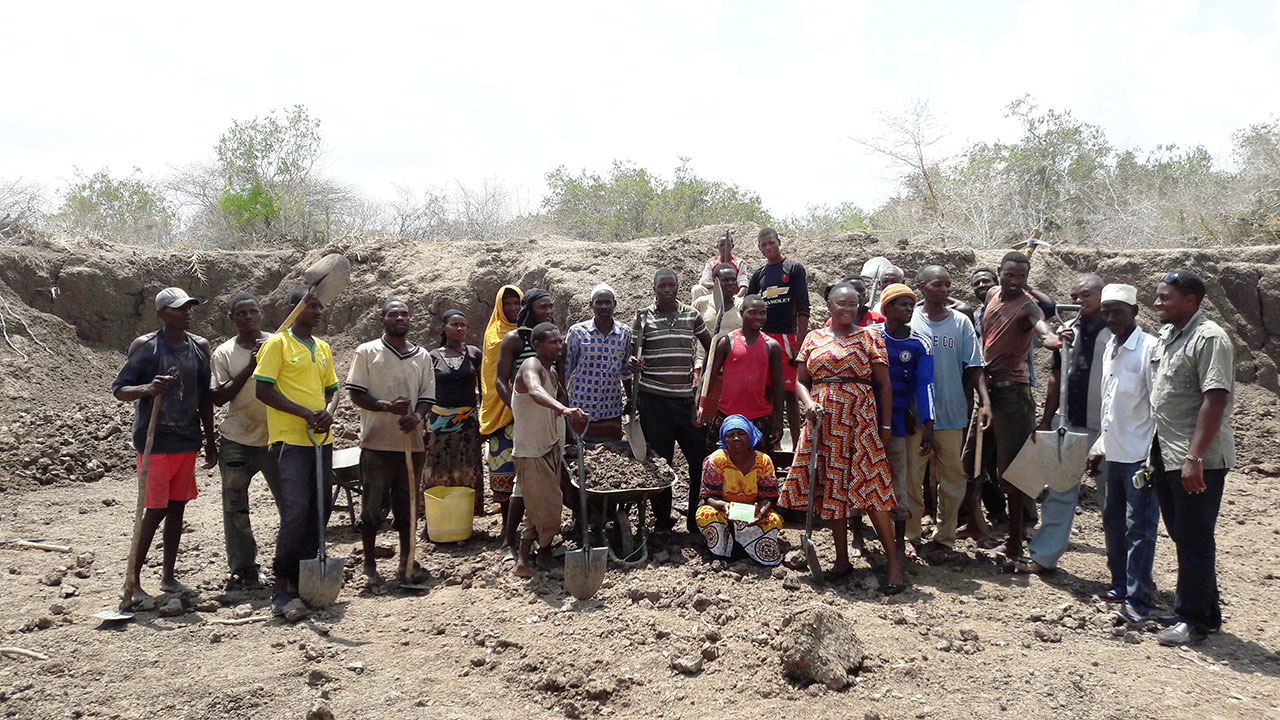
Mama Fatuma (crouching) with other members for the Sera Fiji CFW project.
Kenya, like other countries in the Horn of Africa, has been experiencing severe drought with devastating humanitarian consequences. The situation in Kenya became so dire during the last dry season that the national government declared the drought a national disaster, with 2.7 million people nationwide considered to be at risk of starvation.
Tana River County, in the eastern part of Kenya, was one of the hardest hit areas. More than 134,000 country residents are in urgent need of food aid, per assessment findings by the Kenya Food Security Steering Group (KFSSG). Aside from the drought, the area is also prone to flooding, during which the nearby river Tana bursts its banks, destroys crops and displaces people. And if that is not enough, the area is also under a constant threat of resource conflict, pitying the various ethnic groups inhabiting the area. All these trends and challenges, cumulatively affects the largely agro-pastoral community; driving it into a state of desperation.
In the face of the crisis, CWS, with support from ACT Alliance Kenya drought appeal and working in partnership with Anglican Development Services-Pwani (ADS-Pwani), has successfully implemented a 3-month Cash for Work (CFW) project in Garsen area of Tana River County. The project supported 64 people, of 48 men and 16 women. Each participant was paid for 15 days of work, for 8 hours a day, with payments made electronically via mobile money – popularly known as MPesa.
Why cash approaches, unlike providing emergency food or other materials? By providing support in cash form, participating households can allocate emergency resources per their specific needs. In the most recent assessment, results showed that at least 46% of the cash provided was used to buy food, and 12% to purchase productive assets (e.g., goats or seeds for the next planting season), meaning a total of 58% of spending went toward providing for essential household needs. Of the remaining amounts, 24% was spent on education and 18% on health care. The experience of CWS and its partners thus far is that cash-for-work is effective where markets continue to operate.
For efficiency and accountability purposes, each participant had a monitoring card that they used to note down the number of days and hours they had spent on work and this information was countersigned by their group leader. In addition, community leaders and the area local chief had to verify that the information on participant’s cards was correct and that the work had been done in line with technical standards.
Like other CWS programs, there is also evidence that the emergency response served as a catalyst for community transformation, such as expanding women’s leadership opportunities. Fatuma Guyato (46 y.o.) is a mother of 12, and serves as leader of Sera Feji cash-for-work group, which is tasked with desilting the community water pan. Fatuma exercised her leadership skills during the three-month project, and successfully promoted social cohesion across participants from various ethnic and religious groups. Her job was to ensure that each participant worked for at least 8 hours a day, and to provide work tools and midday meals for participants. In her own words: “I was really devastated by the drought, all my maize crop dried up! I was worried that my family will starve all year long, but thanks to your support, I have bought seeds and ready for the next planting season.”
